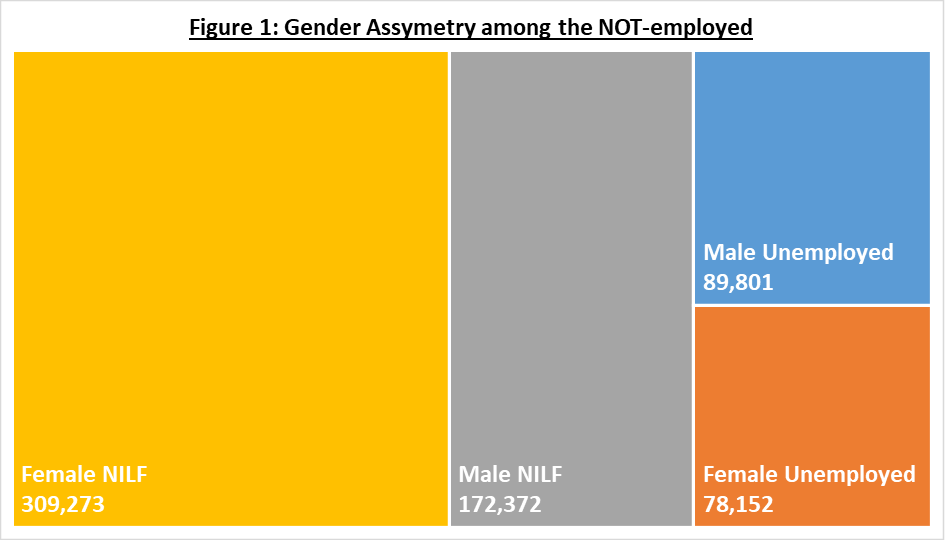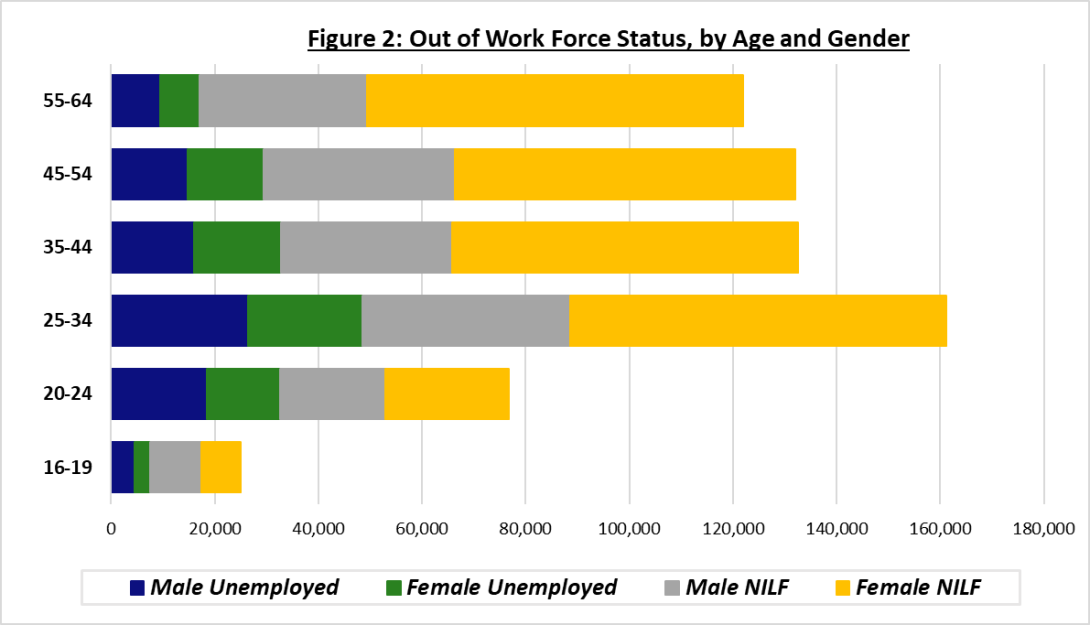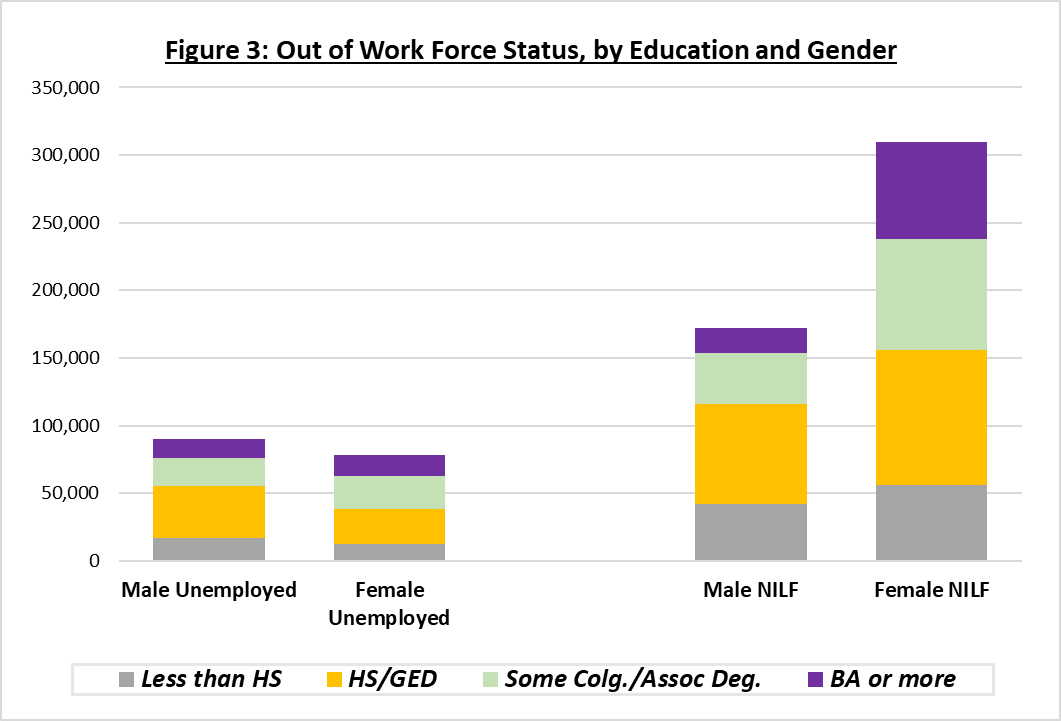Gender Differences in Virginia’s Out-of-Work Population

Employment statistics, such as the rates of unemployment and labor-force participation, are good indicators of workforce engagement, but they obscure the complex and diverse challenges faced by the individuals who may be without a job. The unemployment rate of Virginians age 16 and older in 2016 was 5.0%. A much larger percentage (34.2%) did not participate in the labor force at all—that is, they did not have jobs and also were not actively seeking employment.
Of the 8.3 million Virginians, 1.6 million are currently not working. Individuals among those not working may not be equally interested in working, in need of work, or even be able to work (retired, studying, raising children, etc.). For clarity, then, we define those who are out-of-work by combining the unemployed (who are actively seeking employment) with those who have either suspended their active search for employment or have never considered participating in the labor force (we call this group not-in-the-labor-force).
The numbers for the unemployed and not-in-the-labor-force (NILF) vary by gender (Figure 1). Of the 650,000 Virginians who are currently out-of-work, 40% are male while the remaining are female. More than 300,000 women are not-in-the-labor-force and account for 48% of the population who are not working and not seeking work. Being a single parent or having young children who need care are important considerations that may keep more women out of the work force.

Most Virginians who are out-of-work (160,000) are in their prime working ages between 25-34 years. Across nearly all adult age cohorts, more men are unemployed than their female counterparts; however, the converse is true for those not-in-the-labor-force, where women radically outnumber men within most age categories. Nearly 95,000 women ages (25-34) are out-of-work, which is highest among all of these age cohorts. This non-participation though, is a result of various structural barriers and societal norms, and overcoming some of these obstacles will be a gradual process requiring time and sustained pressure to address these challenges.

Out-of-work status is found to occur more commonly for both men and women who have either a high school degree or lower, as per Figure 3 below. The gender ratio gets skewed for lower levels of educational attainment, with women having a high school education or less being the largest out-of-work group. Among those who are both out-of-work and have a Bachelor’s degree or more, nearly 73% or 87,000 are female, as opposed to 32,000 men; indicating that there are many highly educated women currently not employed.

This consistent gender asymmetry raises the question of whether women continue to have to allocate a large proportion of their time to alternative priorities like care-giving duties or household activities, and often may self-select out of the labor force. These gender-based differences may seem immutable, but closer examination of the reasons behind them may point to policies and support systems that could enable more female labor force participation. Provisions for accessible or affordable childcare and eldercare, better transportation options, flexible work hours for parents of young children, improving gender equity in the work place, are just some examples of the strategies that could improve the gender divide in Virginia’s work force participation rates.
______________
SOURCE NOTES: Data is from the 2012-2016 American Community Survey five-year estimates (PUMA-level microdata). Study universe includes institutionalized individuals.


